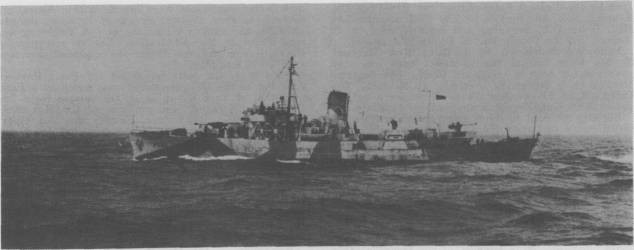
(PG-65: dp. 925; l. 205'2"; b. 33'; dr. 14'7"; s. 16.5 k.; cpl. 87; a. 1 4", 1 3", 2 20mm., 2 dct., 4 dcp; cl. Temptress)
Pert, sprightly, impudent.
Saucy (PG-65) was launched on 14 February 1940 as HMS Arabis by Harland and Wolff, Ltd., Belfast, Northern Ireland; served in the Royal Navy until 1942; and was transferred to the United States Navy at Belfast on 30 April 1942 and commissioned the same day, Lt. A. J Smith in command.
One of a group of corvettes transferred to the United States Navy under reverse Lend Lease, Saucy sailed from Londonderry, Northern Ireland, on 16 May 1942 as an escort for a Halifax-bound convoy, and then proceeded to Boston for overhaul. On 29 June 1942, she arrived at Key West and commenced escort duty in the Caribbean, initially convoying ships between Trinidad and Barbados. In September, she shifted to the Trinidad-Guantanamo convoy route and, in January 1943, to the Trinidad-Recife, Brazil, route. In May 1943, she assisted in the salvage of a torpedoed tanker, towing the ship into port and participating in repair operations for the next two weeks.
After overhaul at Charleston, S.C., Saucy arrived in Boston on 4 March 1944 for escort duty between Newfoundland, Greenland, and Iceland. She was decommissioned at Chatham, England, on 20 August 1945, returned to the Royal Navy on 26 August, and struck from the Navy list on 19 September. In 1947, she was sold by the British into mercantile service as Katina.


